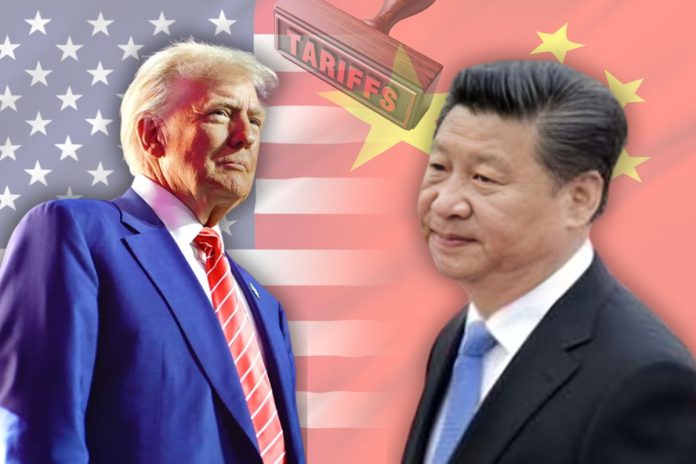China is responding cautiously yet strategically to the United States’ latest move in the escalating trade war. Hours after former President Donald Trump announced sweeping new tariffs—an additional 34% on Chinese goods, raising the total tariffs on some imports from China to a staggering 54%—Beijing issued a strongly worded statement condemning the new China tariffs and urging the U.S. to reconsider its approach.
The Chinese Ministry of Commerce urged the U.S. to withdraw the new measures and vowed to take “necessary countermeasures,” though no specific details were given. While this rhetoric is familiar, analysts across Greater China suggest that China’s actual response will be more calculated and long-term in nature.
Instead of putting in place instant reprisal taxes, Beijing is likely to focus on stabilizing its own economy and trying to make trade more diverse. Bruce Pang, an assistant associate professor at CUHK Business School, said that China probably won’t add more taxes to the situation any time soon. “The focus of China’s response won’t be retaliatory tariffs or such measures,” Pang explained, according to a CNBC translation.
Instead, China will likely channel its energy into boosting domestic consumption, upgrading manufacturing capabilities, and expanding export destinations beyond the U.S. and economies in the West. International markets were shocked by when Trump made his news and how big the new taxes were. Trump put new taxes on the European Union, several key Asian economies, and China.
This showed that he was taking a tougher stance on trade with a wider range of countries. This sweeping policy includes an additional 10% duty on all U.S. imports and country-specific tariffs that particularly target South and Southeast Asian economies—areas where many businesses had recently relocated manufacturing in an attempt to avoid earlier U.S.-China tariffs.
Vietnam, once considered a safe haven for companies looking to diversify from China, now faces U.S. Cambodia will have to pay up to 49% in taxes, and the United States will pay up to 46%. Many international companies spent months moving their supply lines away from China, but these new taxes have thrown those plans out the window. Ben Schwall, founder of STG Consultants, a company that helps companies in Asia handle their supply chains, was shocked by how quickly the U.S. policy shifts.
“Now it’s like someone just flipped over the table,” Schwall said. “All the cards have gone flying, and I don’t know what to do.” Schwall noted that for the past six months, he had been working “like a madman” to help clients move production out of China. But since taxes are now going after almost all good options, those well-thought-out plans are no longer useful at all.
In a strange move, these new rules may actually send some businesses back to China, where they already have a lot of equipment, workers, and supply lines. Schwall said, “In the end, China really is the winner in all of this.” Even though the pressure is growing, China’s reaction is still calm and planned. The focus is not on tit-for-tat revenge, but on keeping the economy going in the long run.
View this post on Instagram
China hopes to weather the storm and become less dependent on the U.S. market by boosting internal spending and making new trade deals, especially with emerging countries and regional groups like ASEAN and BRICS. At the end of its statement, China called for talks again, stating that it would rather have a peaceful solution than a violent one.
Even though the Trump administration’s tariff hike is a big step up in trade issues, Beijing seems to be planning for the long term by supporting its economy with boost measures, encouraging growth within China, and building ties with countries other than Western markets in response to the escalating China tariffs.
As the world of trade changes, China’s move towards robustness and smart adaption could be helpful. The U.S. is stepping up its protectionist policies, but China is sending a clear message: it won’t be forced to make choices based on fear. Instead, it will build a better, more independent future through economic change and a wider range of allies.



















